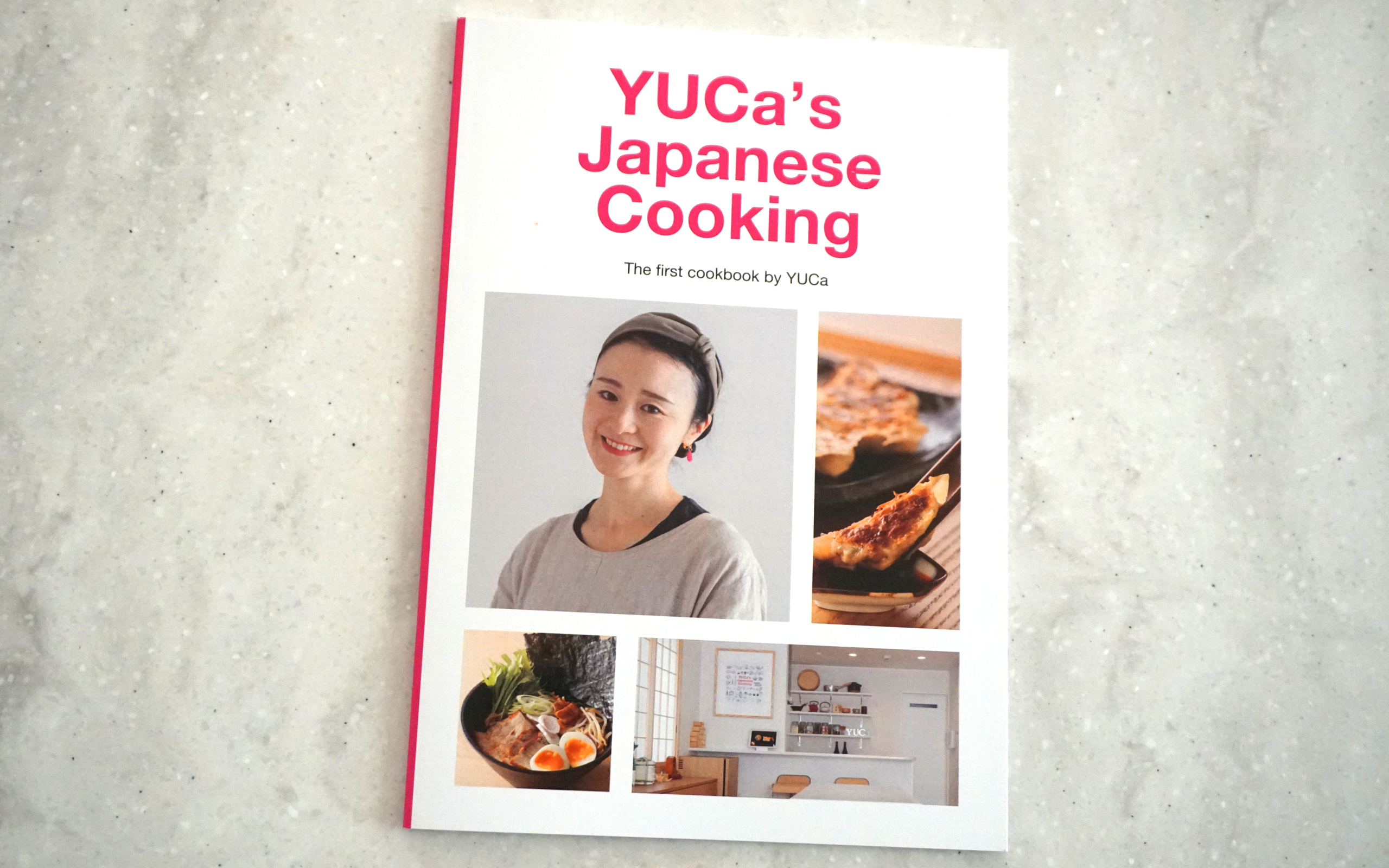Latest Posts
Yakisoba (やきそば)
Yakisoba(やきそば) is a popular Japanese stir-fried noodle dish. Despite its name, which means “fried soba,” it is actually made with wheat-based noodles similar to ramen, not buckwheat soba noodles. The dish typically consists of noodles stir-fried with a mix of vegetables like cabbage, carrots, and onions, along with meat such as pork or chicken.

It’s flavored with a savory sauce that is slightly sweet and tangy, similar to Worcestershire sauce. Toppings often include pickled ginger, dried seaweed, and bonito flakes. Yakisoba is commonly enjoyed at festivals, street stalls, or as a casual meal at home.
Just the other day, there was a Bon Odori festival in our neighborhood, and our whole family joined in. It’s already September, but it’s still quite humid in Tokyo, even in the evenings. Because of that, although I don’t usually drink much, the beer I had while watching the Bon Odori outdoors was incredibly refreshing. Read More
Nerikiri (練り切り)
Nerikiri (練り切り) is a traditional Japanese confection, often served during tea ceremonies. Made from a mixture of white bean paste (shiro-an) and mochi or glutinous rice flour, Nerikiri is known for its smooth, dough-like texture.

It can be shaped and colored to resemble seasonal flowers, fruits, or other nature-inspired designs, reflecting the time of year. Nerikiri is not only admired for its beautiful and intricate appearance but also for its subtle sweetness, which pairs perfectly with the bitterness of Japanese green tea, especially matcha. As an artisanal dessert, it embodies the Japanese appreciation for aesthetics, harmony, and the changing seasons.
Read More
Ramune (ラムネ)
Ramune(ラムネ) is a popular Japanese carbonated soft drink known for its unique bottle design, particularly the Codd-neck bottle sealed with a marble.

The word “ramune” is derived from the English word “lemonade,” reflecting its original citrus flavor, although today it comes in many varieties like strawberry, melon, and lychee.
The bottle’s defining feature is a glass marble that acts as the seal. To open the bottle, you push the marble into a chamber below the bottle’s neck. The marble is then trapped there and creates the iconic “clinking” sound when drinking.
Read More
Yokan (羊羹)
Yokan (羊羹) is a traditional Japanese confection made from azuki red bean paste, agar (a plant-based gelatin), and sugar.

It has a smooth, firm, jelly-like texture and is typically enjoyed as a sweet treat with tea. Yokan is often shaped into rectangular blocks and comes in two main varieties: neri yokan(練り羊羹), which is firm, and mizu yokan(水羊羹), which has a softer, more delicate texture due to higher water content, making it a popular choice in the summer.

There are also variations that include ingredients like chestnuts, sweet potato, or green tea flavoring. Yokan has a rich, mildly sweet taste, and its simple ingredients have made it a beloved dessert in Japanese culture for centuries. It is also appreciated for its long shelf life, which makes it a popular gift or travel souvenir.
Read More
All about Mochi
Mochi (もち、餅) is a polite term for mochi, a food made from glutinous rice. Usually, it is made by steaming glutinous rice and pounding it with a pestle, but it is also widely called mochi when made from grains, rice flour, kuzu flour, and other ingredients. It is a round or flattened food.

Mochi in foreign countries seems to be widely recognized as a sweet with ice cream.
Mochi are rich in carbohydrates (carbohydrates), which are the main source of energy during exercise; they contain more carbohydrates in 100g than rice.
Many people can eat two or three rice cakes even if they cannot eat a bowl of rice or a bowl of rice. Another excellent point of mochi is that it can be eaten in a variety of ways, such as in soups, wrapped in nori (seaweed), or with daikon radish or natto (fermented soybeans) to take in other nutrients at the same time.

It is believed that the rice cake culture was introduced along with the rice culture. In Japan, in particular, people had a particular preference for the stickiness of mochi, which is said to have led to the creation of a unique mochi culture. It is mentioned in documents from the Nara period (710-794), and at that time it was used as a confectionery for the nobility.

By the Heian period (794-1185), event foods were established and Kagamimochi (mirror-shaped mochi) in January, Hishimochi (rhombus-shaped mochi) in March, and Kashiwa Mochi (mochi wrapped with oak leaf) in May were introduced. Botamochi (adzuki bean mochi) and grilled mochi and mochi sweets became common during the Kamakura period (1185-1333), and became increasingly popular during the Edo period (1603-1868), when mochi sweets were used for annual events.

According to statistics from the Ministry of Internal Affairs and Communications, a family in Japan eats about 43 commercially made mochi (about 54 g each) per year.
Relater recipe :
! Caution !
The lower the temperature of mochi, the harder and stickier it becomes. Therefore, cut them into small, easy-to-eat pieces and drink tea or soup to moisten your throat before eating. Also, do not eat too much at once, but chew it well before swallowing.
What is Umami?
Umami is the fifth category of taste and is not as commonly known as the other four (sweet, salty, sour and bitter).

Umami is a concept with which all Japanese people are familiar – the Japanese palate easily recognizes its rich mouth-feel. The Kanji characters for umami translate as “delicious flavor” (旨味). When something taste good, it is often said to be Oishii (美味しい), but it can also be called Umai (旨い), and shares the Japanese character for umami.
Umami can be described as savory; it is full, rich, and round on the palate. It naturally exists in many foods including Parmesan cheese, meat, mushrooms, seaweed and tomatoes.
In 1908, Professor Kikunae Ikeda identified umami while sampling his wife’s is tofu simmered in a kelp broth and later isolated glutamate, inosinate, and guanylate, the naturally occurring amino acids and nucleotides that are the common components in umami-rich foods. Professor Ikeda also developed the flavor enhancer monosodium glutamate.
Many Japanese ingredients are rich in natural umami, including some of the main players in the Japanese pantry; soy sauce, mirin, miso and sake. Food is richer in Umami when fried that when fresh: shiitake, scallops, and daikon, for example.
* Reference of this article : Food Sake Tokyo (The Terroir Guides)
Edible Wild Plants for Japanese Cooking
In spring, edible wild plants called “Sansai” (山菜) appear in supermarkets. Sansai are considered very precious because they can be picked in mountains or fields for a short period of time, only a few weeks.
It is said that there are more than 200 varieties of Sansai, including sprouts, greens, and small, tender young grasses.
Although some Sansai have a bitter taste, they are used in a variety of dishes such as soba noodles, cooked rice, branched vegetables, and salads.
Tempura is a must for those who enjoy the taste of Sansai. When I was a child, my grandparents who lived in the countryside would send us wild vegetables from the mountains when it was time to harvest them. I still remember how my father used to happily eat them as tempura on the same day they were sent to us. (And I used to pick them up and eat them!) At the time, I ate them without really understanding how delicious they were, but now I realize that it was a luxurious time.
Some popular Sansai include:
Asatsuki (あさつき) : Chives
Fuki (ふき) : Japanese butterbur
Fuki no to (ふきのとう) : Unopened bud of Japanese butterbur
Katakuri (かたくり) : Dog’s-tooth violet
Nobiru (のびる) : Red garlic
Seri (せり) : Water dropwort
Tara no me (たらのめ) : Shoot of the Angelica tree
Tsukushi (つくし) : Field horsetail shoot
Udo (うど) : Japanese spikenard
Warabi (わらび) : Bracken
Yomogi (よもぎ) : Mugwort
Zenmai (ぜんまい) : Royal fern
* Reference of this article : Food Sake Tokyo (The Terroir Guides)
Kissaten (Japanese Coffee Shop) 喫茶店
Do you all like to spend time relaxing in a cafe?
While there are many Western coffee chain stores in Japan, there are also traditional coffee shops called “Kissaten”(喫茶店). Kissaten is essentially a store that serves tea or coffee. However, Kissaten in Japan may be a little different.
 First, Kissaten are places to relax and quietly enjoy drinks and food. Some Kissaten have newspapers or magazines as well as TVs in the store, which may serve as background music in the store.
First, Kissaten are places to relax and quietly enjoy drinks and food. Some Kissaten have newspapers or magazines as well as TVs in the store, which may serve as background music in the store.
And, as is increasingly the case with Western coffee chains these days, Kissaten brew coffee one cup at a time, so it takes a little longer to be served. Still, it is worth the wait as a quality drink is served.
Read More
Bonito Flakes (Katsuobushi) かつお節
Katsuobushi (かつお節), dried and shaved bonito flakes, is a key ingredients in dash, brings a smoky richness to the broth. It can be made from a variety of fish including yellowfin tuna, mackerel, and anchovies – each, of course, with its own flavor profile.

To make katsuobushi, the bonito is simmered and its bones are removed after which it is dried and smoked. Sometimes a mold that promotes fermentation is added to the bonito, other fish are processed in a similar fashion.
It is commonly used for dashi (Japanese soup stock), but it is also sometimes placed on top of okonomiyaki or ohitashi to be tasted with the dish.
After being roasted in vacuo and seasoned with soy sauce or other seasonings, it is called “okaka”, and is sometimes mixed with rice balls or rice to make yaki onigiri (grilled rice balls).
There are two major types of Katsuobushi:
Arabushi (荒節) : Light in flavor, this dried and smoked katsuobushi is the most popular type, especially in the Kyoto and Osaka region.
Karebushi (枯節) : A mold that promotes fermentation and imparts a stronger umami flavor is added to arabushi, resulting in this type of Katsuobushi, popular in the Tokyo region.
Different ways to shave fish flakes:
Atsu kezuri (厚削り) : Thick-cut shavings that make an intense dash, used in dishes that are simmered for a long time.
Hanakatsuo (花かつお) : Thinly shaved flakes used for making dash quickly
Hana kezuri (花削り) : Very thin shavings also used to make instant dashi
Ito kezuri (糸削り) : Thin strands often used as a garnish for tofu or vegetables

Recipes to use:
– Dashi (Japanese Soup Stock)
– Okaka onigiri
– Bonito Flakes & Cheese Onigiri
and more!
Shop at YJC’s store on Amazon:
Bonito Flakes (Katsuobushi)

* Reference of this article : Food Sake Tokyo (The Terroir Guides)
Kelp (Kombu)
Kelp (Kombu 昆布) is the king of sea vegetables. It is an essential component in Dashi, the broth used in many Japanese dishes. A natural source for glutamic acid, it is rich in umami. Kombu thrives in the cool, mineral-rich waters surrounding Hokkaido, Japan’s northernmost island.

The cold, mineral-rich waters surrounding Hokkaido provide 99.5% of the country’s kombu. Most kombu is sold in long strips. But it is also available in shavings (tor0ro or boor) to add to soup or sprinkle over the rice. Kombu can also be wrapped around was fish in a process called kobujime, which changes the fish’s texture and adds umami.
There are more than forty types of child and farmed kombu. The name of a specific variety of kombu often reflects where it was harvested.
These are the five most popular:
Rishiri kombu (利尻昆布) : Harvested near Rishiri Island, this is an aromatic kombu that makes a clear broth, popular with chefs in Kyoto. It is considered a high-quality kombu and is often used in top restaurants.
Rausu Kombu (羅臼昆布) : This thick kombu has a stickiness to it, and a deep. Rich flavor that is slightly sweet. Also a high-quality kombu, it is the kombu that is used to make other shaved kombu products such as tororo and oboro.
Ma Kombu (真昆布) : Thick and rich in umami, slightly sweet, with an elegant flavor, this is also considered a top kombu.
Hidaka Kombu (日高昆布) : From the Hidaka region, this kombu is a popular variety used by busy home cooks because it quickly imparts its flavor when simmered in water. It is also reasonably priced and can be used as an ingredients for fish cake stew (oden), sea vegetables and seafood simmered in soy (Tsukudani) and other kombu dishes.
Naga Komnbu (長昆布) : A very long kombu (more than ten meters long), naga kombu is also used in dishes such as oden and Tsukudani. It is found only in the wild – not farmed- and is reasonably priced.

Some Kombu products (not the Kombu used in dashi) include:
Komochi Kombu : Kombu layered with herring eggs.
Kombu cha : Kombu that has been dried and crushed into a powder; most often used for tea, soup stocks, or for thickening non-oil salad dressings.
Musubi Kombu : Knots of Kombu, often found in fish cake stew. (Oden)
Oboro : Shaved Kombu, used for soups
Tororo : Shaved Kombu, used in soups and wrapped around rice and other items.
Shop at YJC’s store on Amazon:
Kelp (Kombu)

* Reference of this article : Food Sake Tokyo (The Terroir Guides)



























